Young's birch: description and cultivation
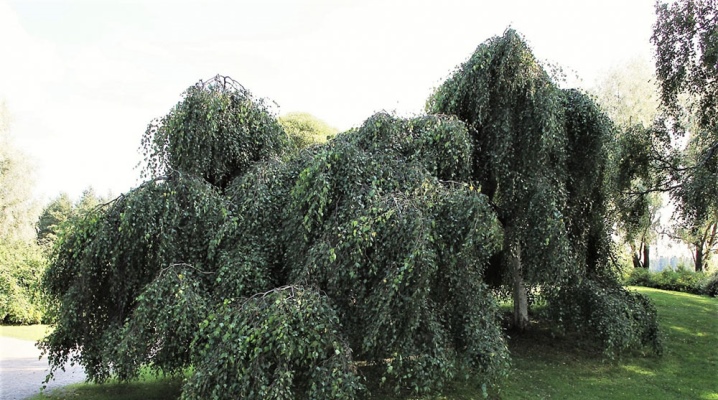
Young's birch looks good in the formation of landscape design. This small tree has excellent decorative qualities, so it is never left without attention on the garden plot.
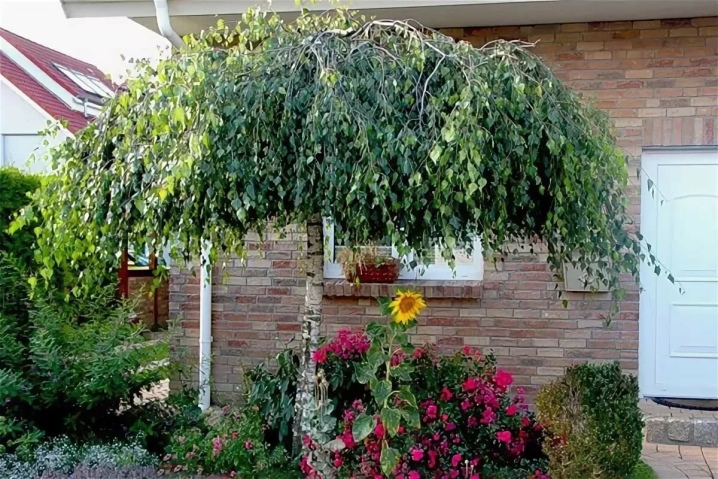
Peculiarities
Betula pendula Youngii looks like a slender, graceful plant. A deciduous tree can be planted alone or be a participant in compositions.
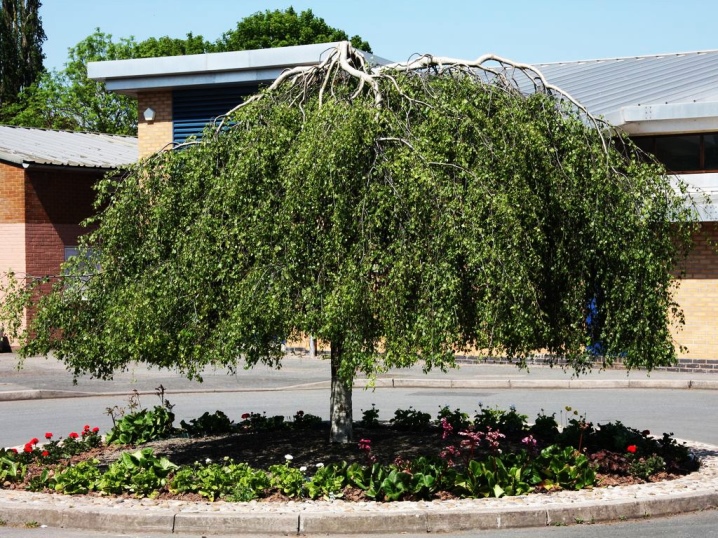
"Pendula" is often used in the formation of park areas and alleys on the territory of a private house.
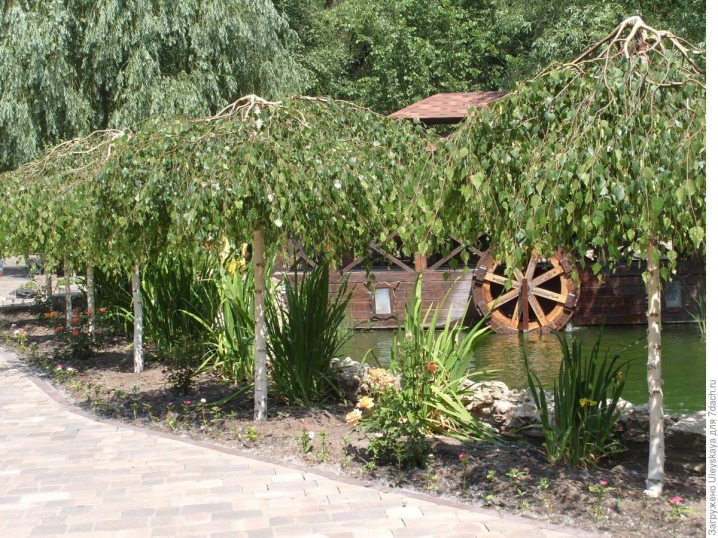
Due to the "weeping" crown and light color of the trunk, the culture looks exquisite and delicate.
A dwarf dwarf birch grafted on a Youngii stem is characterized by slow growth, it can grow by about 0.3 meters per year. The highest culture height is considered to be 40-60 cm. The crown width of a tree is usually equal to its height. The description of the plant indicates that the color of the trunk of Young's birch is practically the same as that of its relatives, usually at a young age it is light brown, later it turns white. It is also characterized by smoothness and the presence of black cracks.

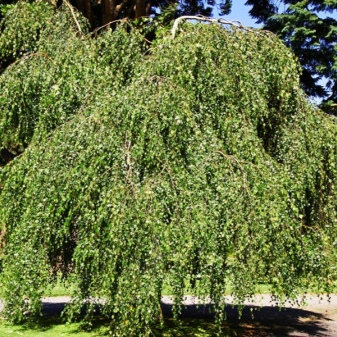
The shape of the crown of a weeping birch is umbrella-shaped, it has long falling branches.
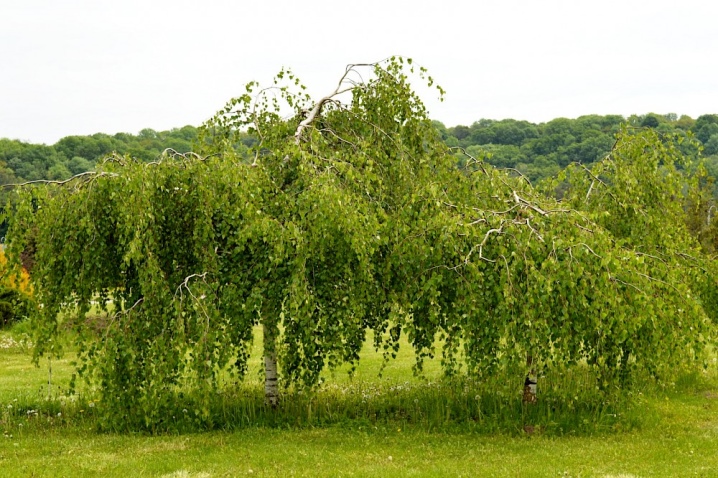
The foliage of the plant is characterized by a diamond shape, a jagged end and a light green color. In autumn, the leaves turn bright yellow. The flowering period of the culture is the middle of spring. At this time, long honey earrings appear on the tree.
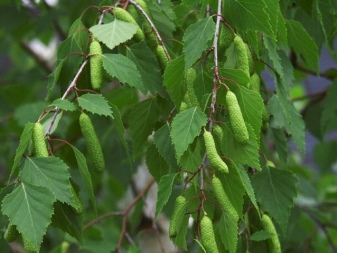
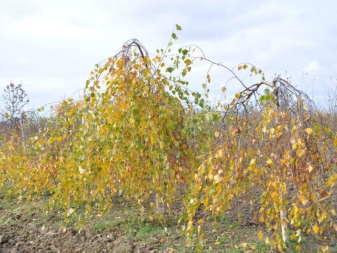
The fruit of Betula pendula Youngii is small, elliptical, resembling a lionfish. The root system of the plant is superficial, but at the same time quite strong.
Young's birch belongs to long-lived trees, on average, it lives from 110 to 120 years.
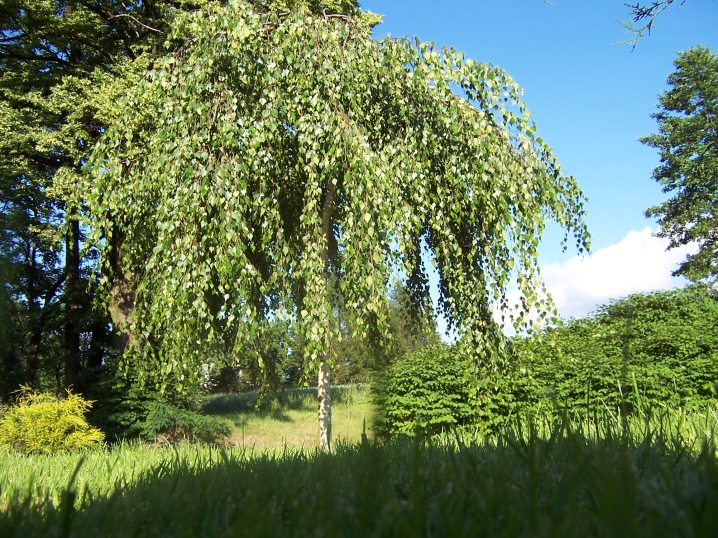
Care and reproduction
Young's birch is considered an unpretentious plant, it does not require special care measures. but some rules for home care should not be forgotten.
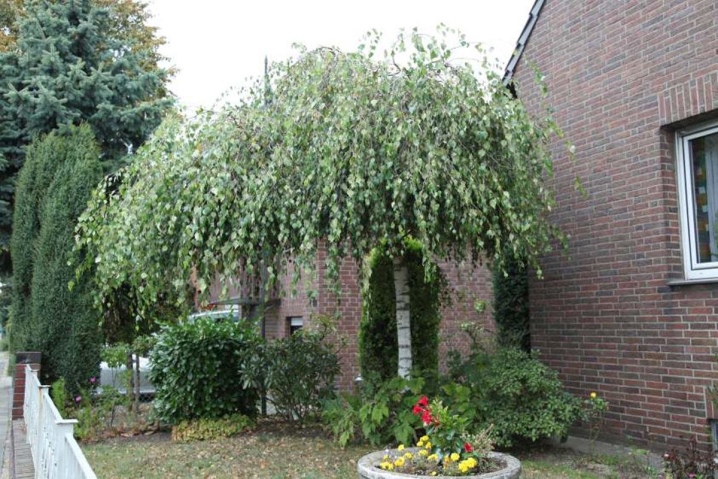
In order for a dwarf tree to delight its owners with an emerald and beautiful crown, it is worth listening to the following recommendations regarding care and planting.
- It is better to plant the tree in a bright place, as strong shading will slow down the growth of birch, and the number of flowers and leaves will be much reduced.
- Betula pendula Youngii should not be additionally insulated as it tolerates low temperatures well. However, gardeners should not forget about protecting the tree bark from rodents. To this end, in the cold season, the culture can be secured with a net, fixing it at a distance of 5 cm from the trunk circle.
- Young's birch can be planted on any soil, but alkaline soil is considered the best option in this case.
- Juveniles of Betula pendula Youngii can react to polluted air, so it is better to plant a mature adult plant in a city park or public garden.
- Due to the surface type of the root system, the culture requires regular watering, especially in dry, hot weather. When irrigating a tree, a gardener should remember that overflow and stagnation of liquid have a negative effect on birch. For this reason, experts recommend organizing a thick drainage layer when planting the tree.
- Jung's birch tree requires regular feeding, especially for the first years of life. Before the first leaves appear on the plant, it should be fertilized with 1 kg of manure, 15 g of nitrate and 10 g of urea, diluted in a bucket of water.
- For full breathing of the roots, the soil of the trunk circle must be constantly loosened, and the weed must be carefully eliminated.After irrigation, it is necessary to mulch the soil with peat near the birch.
- Regular pruning and crown shaping of Betula pendula Youngii is not required. In the spring, using a pruner, you need to remove dried birch twigs.
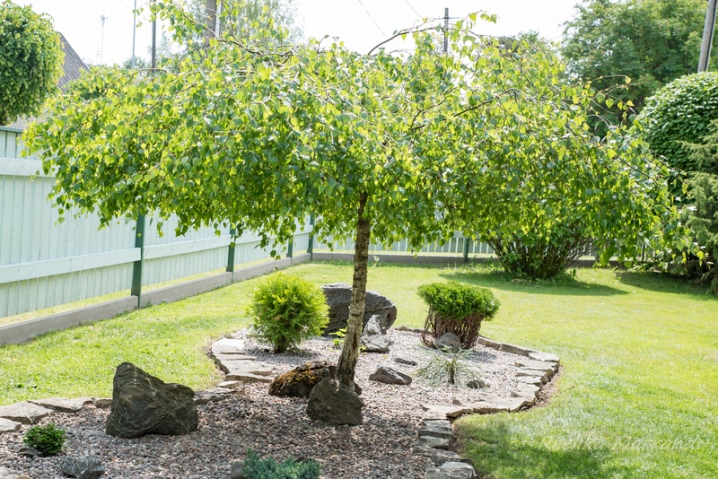
Compliance with the above rules contributes to the fact that the tree will grow and develop well.
To propagate a crop, a gardener needs to sow seeds that are harvested in the fall. For planting, you need to use a container with pre-prepared soil. The seeds are buried in the ground, after which the soil is mulched.
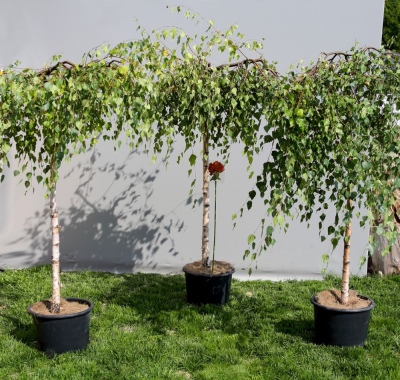
Diseases and pests
If the birch planted on the site turns yellow, dries, does not bear fruit, then most likely it has been attacked by diseases or pests.
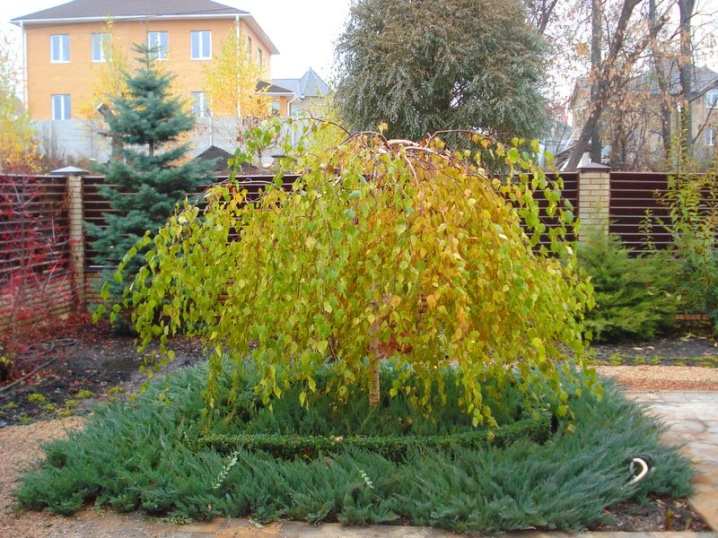
This plant, like many others, can suffer from infectious or non-infectious ailments, as well as various parasites that can infect both weak and healthy trees.
Most often, Betula pendula Youngii suffers from the following diseases and pests.
- Tinder fungus. Often this disease attacks weakened cultures. Fungal spores are able to penetrate through lesions in the cortex, where they begin their vital activity. In case of damage to a young birch, a significant reduction in its life occurs. If a tree lives in unfavorable conditions and is affected by a tinder fungus, then the culture will die in 4 years.
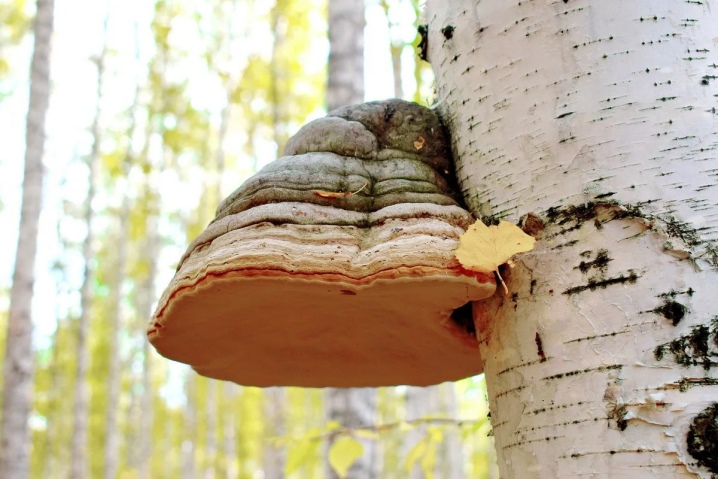
An adult plant is characterized by greater resistance, however, if an ailment is found, it should be cut down so that the infection does not get to other representatives of the flora.
- "Witch's Broom" - this disease occurs after the defeat of birch by a marsupial fungus. Its cells are actively multiplying, causing foliage deformity and the appearance of a waxy coating on the leaves.

- Powdery mildew considered the most common disease of dwarf ornamental birch. With this disease, the plant is affected in the first summer weeks, it is then that a cobweb-like bloom appears on the leaves of the tree. The affected foliage gradually dies off, and the shoots stop developing.

- Dropsy is bacterial. This disease is considered the most dangerous in birches, it is accompanied by the appearance of swelling with liquid inside. After the tissue of the plant dies off, torn edges are formed. After several years of illness, the tree dies.
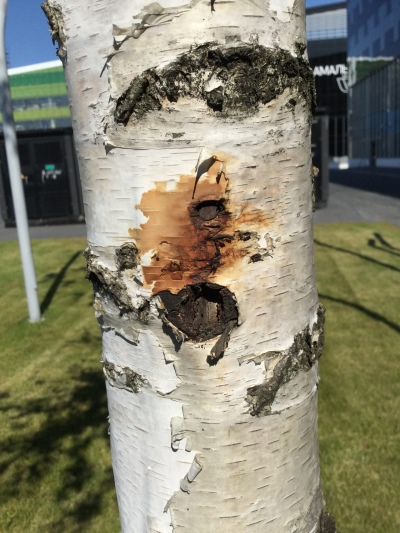
To combat infections and pests of Young's birch, it is worth using special preparations. The latter are bred according to the instructions and used for periodic spraying of the culture.
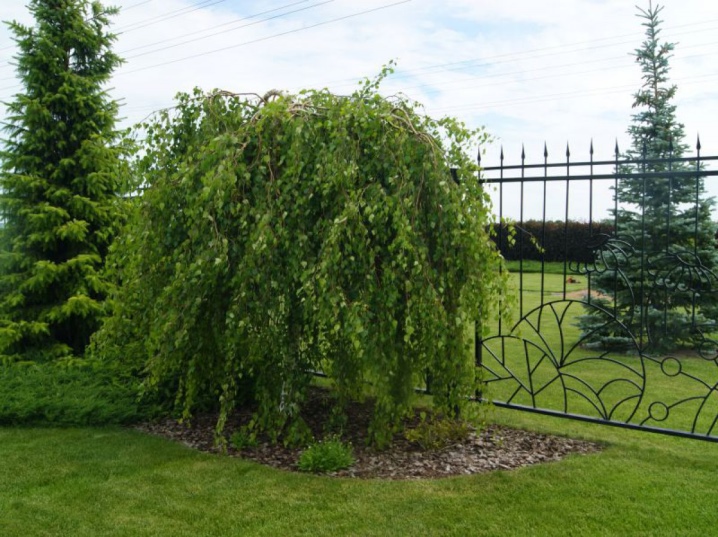
Examples in landscape design
The decorative tree of Jung's birch goes well with coniferous crops. In autumn, when the foliage turns yellow, Betula pendula Youngii is able to create a chic resonance with green needles.
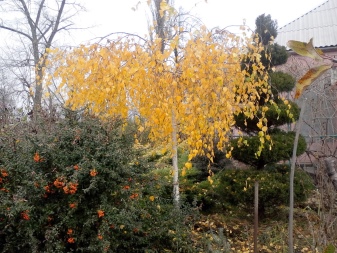

Thanks to the hanging branches, the crown of the tree can be made of any shape. In addition, the plant looks great in a forested area, on an alley and in a garden area.


Jung goes well with shrubs and deciduous trees.
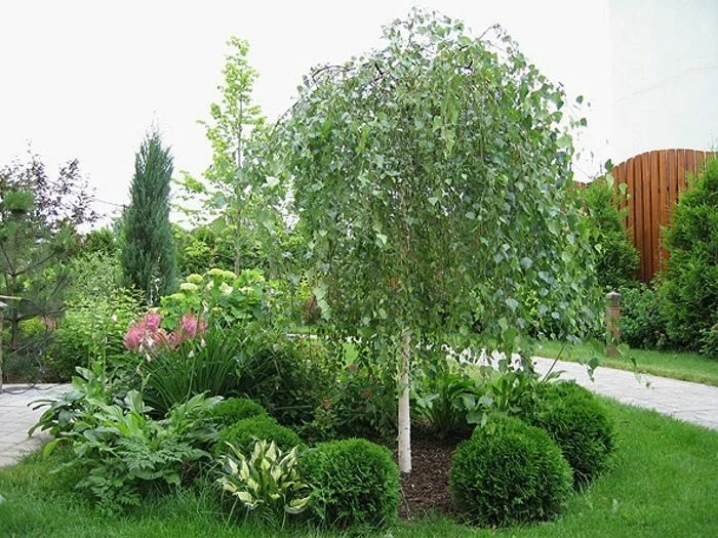
Description and cultivation of Jung's birch in the video below.



































































The comment was sent successfully.